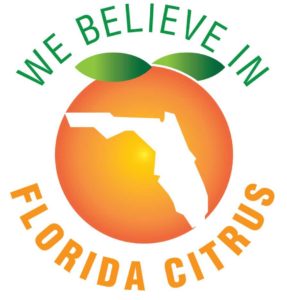I believe in Florida citrus because I believe in the people committed to its future. Namely, the state’s resilient growers and world-renowned scientists working together.
This marriage of science and commerce will get us to that future. Through the eyes of Ron Mahan of Tamiami Citrus and David Howard of Graves Brothers Company, I can already see its outlines in the thousands of acres of trees their companies have planted in recent years, Ron’s in Southwest Florida and David’s in the Indian River area.
Their vision extends many harvests into the future. It sure looks like they still believe. So, do I.
Ron and David received me like an old friend when I visited them. In a sense, I am. The visits continue a century-old relationship between growers and scientists. It’s what we’re leaning on heavily to meet this moment.
Ron and his partners formed Tamiami Citrus in 2014, which did not appear to be a propitious time for a Florida citrus startup. But they since have invested in the planting of 5,500 acres of citrus groves.
Tamiami did not plant for sentimental reasons. Ron and his partners saw business opportunity. And they saw it because corporate and University of Florida Institute of Food and Agricultural Sciences (UF/IFAS) research were yielding evidence that growers could profitably produce citrus in the HLB era. Ron saw promise in new varieties and management practices.
That research and evidence is even stronger now, and UF/IFAS continues to deliver it. We’ve recruited even more expertise from around the world as Ron’s trees have grown to the point of productivity.
It was much the same story with David. Graves Brothers, where he works and whose original Wabasso citrus plantings date back to 1929, has replanted about 20 percent of its acreage in recent years. As president of the Citrus Research and Development Foundation (CRDF), David is deeply involved in the grower input that makes citrus science so relevant and reminds scientists of the urgency of the pace of discovery and innovation.
He didn’t need to tell me this. He showed me. As we toured the Graves Brothers’ groves, he pointed out how research from UF/IFAS and other scientists funded by CRDF was translated into practice — things like tree planting density and nutrition.
The payoff from public and private investment in UF/IFAS research has been immense. It has yielded a portfolio of solutions growers use to plant the right varieties of trees, to support them with the right kind of nutrition, and to choose the best fertilizer, irrigation, and pest management options tailored to their region.
We’re getting closer to the day when we develop the prescription for individual groves or even single trees within a grove. UF’s historic commitment to becoming an academic world leader in artificial intelligence will give scientists tools to develop more precise solutions more quickly.
I believe it will deliver game-changing progress the way the tractor, synthetic fertilizer, and genomics have for previous generations. Already scientists like Arnold Schumann who have served the industry with solutions for decades are now employing this tool, as are emerging faculty stars like Yiannis Ampatzidis.
I believe in Florida citrus because I believe that science and technology will help the industry produce its way to a prosperous future. It’s not just what we do but how we do it — in partnership.
Citrus science is forged by a combination of UF/IFAS lab work and growers’ insight and experience. The resulting common set of facts and evidence point to solutions. It has always been thus in the groves, the greenhouses, and labs, and that’s why I believe in Florida citrus.










